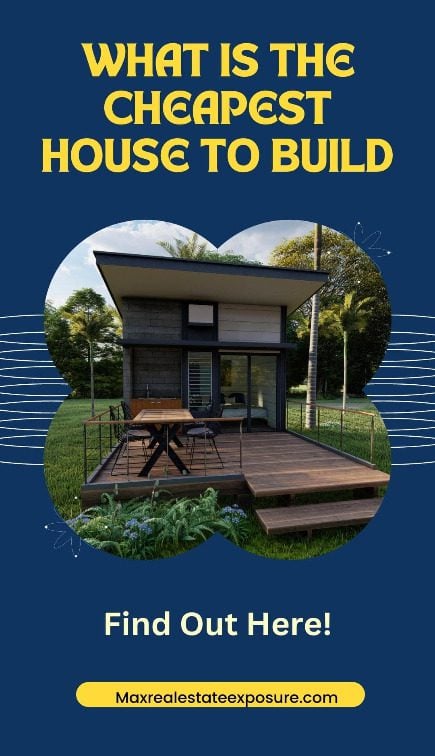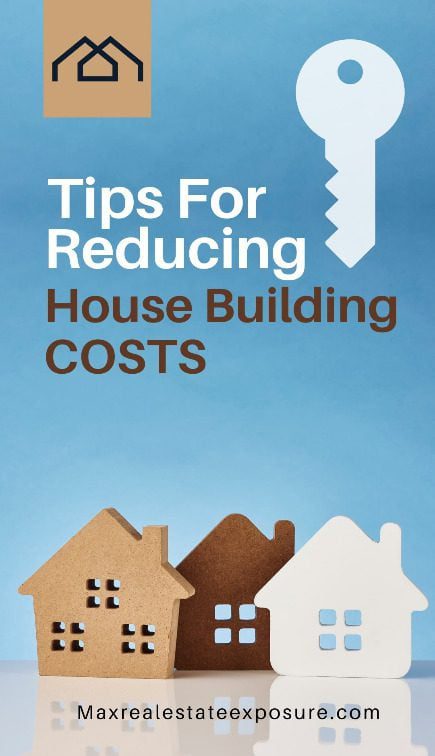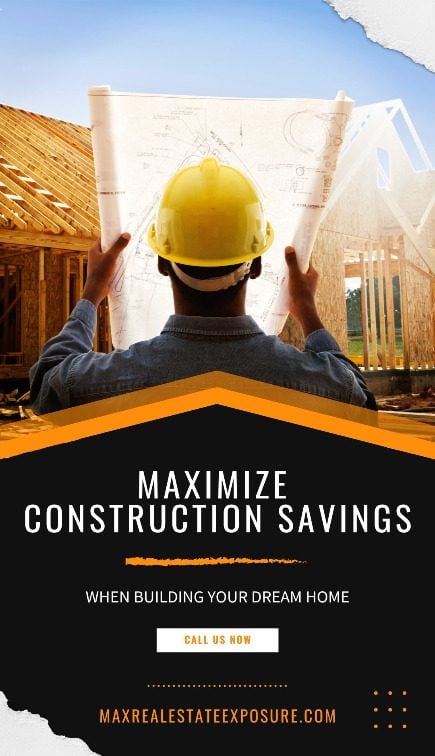 Are you wondering about the cheapest houses to build?
Are you wondering about the cheapest houses to build?
When building a new house, finding the most cost-effective option is critical. We will explore the cheapest types of homes to build, considering factors such as location, design complexity, and material choices.
We’ll discuss popular options like ranch homes, colonial homes, tiny homes, shipping container homes, cob construction homes, and prefabricated homes.
Additionally, we’ll delve into cost-effective building materials such as prefabricated panels, concrete sheets, shipping containers, recycled wood, bamboo, and cob.
You’ll discover tips for reducing construction costs and comparing building expenses versus buying a home.
Finding a cheap house to build will be attainable with detailed research.
Understanding the Cost Factors in Home Construction
When considering building a new house or buying new construction, it is crucial to understand the various cost factors involved. These factors can significantly impact the overall affordability of your project and help you make informed decisions.
Location and Cost of Living
The location of your construction project plays a pivotal role in determining the cost. Areas with higher living costs, such as major cities or highly desirable subdivisions, generally entail higher construction expenses.
On the other hand, regions with a more affordable cost of living, like rural areas or certain states such as Arkansas, can offer more cost-effective building options.
Buying an acre of land can also be much cheaper in certain places.
Design Complexity and Material Choices
The design complexity of a house and the materials used also impact the construction costs. Opting for a simple design can reduce expenses significantly. Additionally, the choice of materials can make a substantial difference.
While luxurious and expensive materials like wood or limestone can increase costs, various cheaper alternatives are available.
- Prefabricated Panels: These panels offer a cost-effective solution and can be quickly assembled on-site.
- Concrete Sheets: Durable and affordable, concrete sheets provide an excellent option for cost-conscious builders.
- Shipping Containers: Repurposing shipping containers as homes have gained popularity due to their affordability and eco-friendly nature.
- Recycled Wood: Using reclaimed wood helps the environment and saves money on material expenses.
- Bamboo and Cob: These sustainable and low-cost materials offer unique design possibilities while being budget-friendly.
By understanding the location and cost of living dynamics and making wise choices regarding design complexity and material selection, you can optimize the cost-effectiveness of your home construction project. This knowledge will empower you to make informed decisions and ensure your dream home remains within your budget.
Exploring Cheaper Types of Homes to Build
 When building a cost-effective house, several homes offer simple and budget-friendly designs. Finding a house for low-income can be challenging, but these housing selections can give you a chance.
When building a cost-effective house, several homes offer simple and budget-friendly designs. Finding a house for low-income can be challenging, but these housing selections can give you a chance.
Let’s explore some of these options:
Colonial Homes
Colonial homes, inspired by the architectural style of the American colonial period, offer a classic and economical option. With their symmetrical design and efficient use of space, these homes can be built at a lower cost than more elaborate styles.
Homes will cost more when you add multiple roof lines and other architectural details. When thinking about a colonial, it is a “box” with simple but classic lines.
Tiny Homes
Tiny homes have gained popularity recently due to their affordability and minimalistic lifestyle appeal.
These compact houses are designed to maximize space utilization and minimize construction costs, making them an attractive option for budget-conscious individuals.
The cost of tiny homes is much less than other housing choices. It is one of the cheapest houses to build primarily due to space maximization.
Shipping Container Homes
Repurposing shipping containers into homes is a creative and cost-effective solution. These structures can be modified to provide comfortable living spaces while significantly reducing the cost of traditional construction materials.
Using a shipping container as a home is very trendy at the moment. There are many considerations when building a shipping container home. Look at our comprehensive guide for everything you should know about container housing.
It is undoubtedly one of the cheapest houses to build, so that it will be worth your time.
Cob Construction Homes
Cob construction, a technique that utilizes a mixture of earth, straw, and water, offers an environmentally friendly and low-cost building method. Cob homes have natural insulation properties, making them energy-efficient and cost-effective to build.
Prefabricated Homes
Prefabricated homes, or prefab or modular homes, are constructed off-site and assembled on the building site. This streamlined manufacturing process reduces labor and material costs, making prefab homes an affordable option for many.
By exploring these cheaper homes, prospective homeowners can find a design that fits their budget and meets their needs. Whether it’s a ranch home, a colonial style, a tiny house, a shipping container conversion, a cob construction, or a prefabricated home, there are various options to consider for a cost-effective build.
Many people ask about the pricing of modular homes. You can get an excellent idea in our in-depth review. You can also see how modular homes compare to stick-built as well.
Many people think stick-built homes are better than modular ones, but that is not necessarily the case. Years ago, this was true, but technology has come a long way.
Ranch Homes
Ranch homes, or one-story or single-level homes, are popular for those seeking affordability. They typically have a simple layout with all the living spaces on one floor, which can help reduce construction costs.
However, remember that more complicated ranch housing is expensive to build on a cost-per-square-foot basis. It is always less costly to go up that out.Click To TweetCost-Effective Building Materials
Choosing suitable materials can make a significant difference when building a cost-effective house. Here are some options to consider:
Prefabricated Panels
Prefabricated panels are an excellent choice for cost-effective construction. These panels are factory-made and can be easily assembled on-site, saving labor costs. They come in various materials, such as wood, concrete, or steel, and offer excellent insulation and durability.
Concrete Sheets
Concrete sheets and fiber cement boards are another budget-friendly option. They are lightweight, easy to install, and provide excellent fire resistance. Concrete sheets come in different sizes and can be used for walls, roofs, or flooring, making them versatile for various construction needs.
Shipping Containers
Repurposing shipping containers as living spaces has gained popularity due to their affordability and sustainability. These sturdy metal containers can be modified and connected to create comfortable, cost-effective homes. With proper insulation, they offer a modern and eco-friendly housing solution.
Recycled Wood
Using recycled or reclaimed wood is an eco-friendly choice and a cost-effective one. Repurposing salvaged wood from old buildings or furniture reduces the need for new materials and lowers overall construction expenses. Additionally, it adds a unique rustic charm to the house’s aesthetics.
Bamboo and Cob
Bamboo and cob are natural, renewable materials used for centuries in construction. Bamboo is strong, lightweight, making it an affordable alternative to traditional hardwood. Cob, a mixture of sand, clay, and straw, can be molded into walls and provides excellent insulation.
These materials offer sustainable options for building environmentally friendly and cost-effective homes.
Homeowners can significantly reduce construction expenses by exploring and utilizing these cost-effective building materials while achieving their desired housing design and functionality.
While these are less mainstream, they could fit if you have a smaller housing budget.
Tips for Reducing Construction Costs
 When it comes to building a house on a budget, there are various strategies you can employ to reduce construction costs.
When it comes to building a house on a budget, there are various strategies you can employ to reduce construction costs.
By being mindful of economical materials, opting for a simple design, considering building upward, and exploring the benefits of prefabricated versus customized materials, you can significantly cut expenses while still achieving your dream home.
Using Economical Materials
One effective way to save money during construction is by utilizing economical materials. As mentioned, consider alternatives such as recycled wood, bamboo, or prefabricated panels, which are both cost-effective and eco-friendly.
These materials can contribute to significant savings without compromising the quality or aesthetics of your home.
Maintaining a Simple Design
Avoiding complex architectural designs can help minimize construction costs. You reduce labor and material expenses by opting for a straightforward, streamlined design. Focus on functionality and practicality to create a space that meets your needs while keeping costs down.
Building Upward
Maximizing vertical space through multi-story construction can be more cost-effective than spreading the house horizontally. Building upward allows you to optimize the use of your land while minimizing foundation and roofing expenses.
Consider creatively adding additional floors or utilizing attic or basement space to maximize your construction budget. The price per square foot for building homes comes down when you go up vs. out.
Prefabricated vs. Customized Materials
Another factor to consider is the use of prefabricated materials versus customized options. Prefabricated materials, such as pre-cut structural components or even e modular units, can significantly reduce construction time and labor costs.
While custom materials may offer more design flexibility, they often come with a higher price tag. Evaluate the balance between customization and cost when making material choices.
Implementing these tips can reduce construction costs without compromising your home’s quality or overall design. With careful planning and intelligent intelligent-making, building your dream home can be budget-friendly.
Comparing the Cost of Building vs. Buying a Home
When considering purchasing a new home, it is essential to compare the cost of building one versus buying an existing property. This analysis involves evaluating different aspects, such as evaluations and understanding competitive housing markets.
Evaluating Land Deals
The first step in comparing costs between building and buying a home is to assess available land deals. It is crucial to research and analyze the price and location of potential plots of land.
Factors to consider when evaluating land deals include:
- Location: The desirability and proximity to amenities, schools, workplaces, and transportation.
- Zoning and permits: Understanding the zoning regulations and necessary permits for building.
- Infrastructure: Assessing the availability and costs of utilities such as water, electricity, and sewage.
- Property survey: A land survey can help determine wetlands, streams, and other building obstacles. The cost of a land survey is well worth it when evaluating land.
By thoroughly evaluating land deals, potential homeowners can make informed decisions regarding the cost-effectiveness of building a new home.
Competitive Housing Markets
In some regions, housing markets can be highly competitive, which impacts the cost of buying an existing home. Understanding the dynamics of competitive housing markets is crucial when comparing building versus buying costs.
Factors to consider in competitive housing markets include:
- Supply and demand: Assessing the availability of homes for sale and the number of potential buyers.
- Price trends: Monitoring the fluctuations in housing prices over time to gauge affordability.
- Additional costs: Considering potential expenses such as closing costs, real estate agent fees, and possible bidding wars.
By analyzing competitive housing markets, individuals can better determine the affordability and cost-effectiveness of building a new home.
Maximizing Savings and Affordability
 Maximizing savings and ensuring affordability are vital considerations when building a new home.
Maximizing savings and ensuring affordability are vital considerations when building a new home.
We will explore different strategies and options to help you achieve these goals.
Mortgage Options for New Home Construction
Securing the right mortgage is essential for financing your new home construction project. Exploring various mortgage options and comparing interest rates, loan terms, and down payment requirements is necessary.
Consider working with a reputable lender specializing in construction loans, as they can guide you through the process and provide tailored solutions to fit your financial needs.
A land loan will be better if you plan to hold onto the land and not build it immediately.
Utilizing Buy Nothing Groups
Joining local buy nothing groups or online communities can be a great way to save money on building materials and household items. These groups often facilitate free exchanges or low-cost transactions for reusable materials that can be repurposed in your construction project.
It’s a sustainable and cost-effective approach that helps you save, reduces waste, and supports the sharing economy.
Considering Energy Efficiency
Investing in energy-efficient features during construction can lead to significant long-term savings. Consider incorporating energy-saving appliances, insulation, windows, and HVAC systems that meet or exceed industry standards.
Additionally, explore renewable energy options such as solar panels or geothermal systems, which can help reduce your utility bills and minimize your environmental impact.
By carefully considering mortgage options, leveraging buy nothing groups, and prioritizing energy efficiency, maximizing savings and affordability becomes more attainable when building your new home.
These strategies, other cost-saving measures, and intelligent decision-making throughout construction will contribute to your dream home’s financially feasible and sustainable outcome.
Factors to Consider for Your Dream Home
Assessing Your Needs and Preferences
Assessing your needs and preferences is crucial before embarking on the journey of building your dream home. Consider the size, layout, and functionality that will suit your lifestyle.
Consider the number of bedrooms and bathrooms you require and additional spaces like a home office, playroom, or gym. Finished basements are very popular today, and have tons of options for finishing them. The cost of finishing a basement is much less than above-grade space.
Evaluate your lifestyle and hobbies to ensure your new home accommodates them.
Balancing Costs and Design
While everyone desires their dream home to be aesthetically pleasing, balancing costs and design is essential. Opting for a more straightforward architectural design with clean lines and fewer intricate details can help reduce construction expenses.
Explore cost-effective building materials and prioritize the features that truly matter to you. Designs like contemporaries with many angles and wasted space cost more per square foot.
Finding this equilibrium allows you to build a beautiful home while staying within budget.
Incorporating Sustainable Features
In today’s environmentally conscious world, incorporating sustainable features into your dream home benefits the planet and can save you money in the long run. Consider installing energy-efficient appliances, solar panels, and proper insulation to reduce utility costs.
Use eco-friendly materials like reclaimed wood or recycled countertops to minimize your carbon footprint. Investing in sustainable features will create a more comfortable living space and contribute to a greener future.
- Assess your needs and preferences to determine your dream home’s essential features and layout.
- Strike a balance between design and costs by opting for a more straightforward architectural style and cost-effective materials.
- Incorporate sustainable features like energy-efficient appliances and eco-friendly materials to reduce environmental impact and save money.
Building your dream home involves careful consideration of these factors. Remember that every decision will impact your home’s overall cost and design.
By evaluating your needs, balancing costs, and embracing sustainability, you can create a personalized and affordable dream home that meets your desires and aligns with your values.Click To TweetBuilding Techniques and Innovative Ideas
When considering constructing a new house, it is worth exploring various building techniques and innovative ideas that can help make the process more cost-effective and sustainable.
These techniques incorporate creative approaches to materials, design, and construction methods, resulting in unique and affordable homes.
Combining Materials for Cost-Effectiveness
One approach to reducing construction costs is combining harmonious and complementary materials. By mixing materials such as wood, concrete, metal, and recycled elements, builders can create cost-effective structures that benefit from the unique properties of each material.
For example, using prefabricated panels with reclaimed wood can save time and cost without compromising quality or aesthetics.
Utilizing Reclaimed and Recycled Materials
Embracing the concept of sustainable building, utilizing reclaimed and recycled materials reduces the environmental impact and lowers construction expenses. Salvaged materials such as reclaimed wood, recycled bricks, or repurposed metal can add character and uniqueness to a home while being budget-friendly.
Additionally, incorporating salvaged materials helps reduce waste and promotes environmentally conscious construction practices.
Exploring Alternative Construction Methods
Exploring alternative construction methods can offer innovative solutions for affordable housing. Techniques such as modular construction, where pre-assembled modules are manufactured off-site, can significantly reduce labor and construction time.
Other alternative methods, like earthbag or straw bale construction, offer low-cost and energy-efficient options for those looking to build on a tight budget.
Final Thoughts on Cheapest Homes to Build
By embracing these building techniques and innovative ideas, homeowners can achieve their dream of building an affordable and sustainable home. Combining materials, utilizing reclaimed resources, and exploring alternative construction methods can pave the way for unique and cost-effective housing solutions.
Finding the cheapest houses to build may take more time and research, but it could be worth it.
About the Author: The above Real Estate information on the cheapest houses to build was provided by Bill Gassett, a Nationally recognized leader in his field. Bill can be reached via email at billgassett@remaxexec.com or by phone at 508-625-0191. Bill has helped people move in and out of Metrowest towns for 37+ Years.
Are you thinking of selling your home? I am passionate about real estate and love sharing my marketing expertise!
I service Real Estate Sales in the following Metrowest MA towns: Ashland, Bellingham, Douglas, Framingham, Franklin, Grafton, Holliston, Hopkinton, Hopedale, Medway, Mendon, Milford, Millbury, Millville, Northborough, Northbridge, Shrewsbury, Southborough, Sutton, Wayland, Westborough, Whitinsville, Worcester, Upton, and Uxbridge MA.

